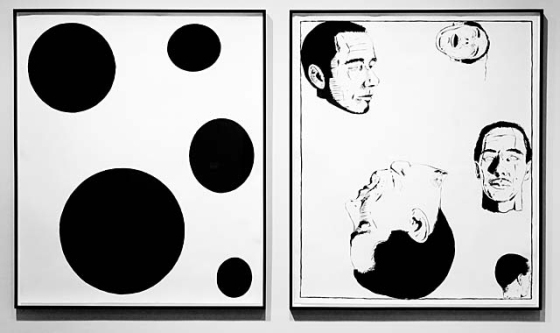
Video Statements and Proposals (Introduction)
Mike Kelley
The statements on video that follow are straightforward descriptions of the various videotapes I have made, participated in, or (in one case) described in the form of three proposals. Until around 1992, most were written for the presentation of “Videotapes by and with Mike Kelley” (titled My Life and Media) held at the Broadway Kino in Cologne on November 14, 1991. This screening was organized to coincide with an unrelated exhibition mounted at Jablonka Galerie. The selection of videotapes presented at the Broadway Kino was picked up for distribution, as a package, by Electronic Arts Intermix, and some of these statements now function as video descriptions in their catalogue. Because they were originally conceived for a survey screening, some of these writings contain more biographical and contextual information than might normally be expected in a simple, introductory statement. It also explains why, in some cases, I am describing works of which I am not the author. In my brief comments on individual videos by Tony Conrad, Paul McCarthy, Tony Oursler, and Raymond Pettibon, and on my collaborations with Ericka Beckman, Bob Flanagan and Sheree Rose, Paul McCarthy, and Bruce and Norman Yonemoto, I do not discuss the complexity and importance of these artists’ careers. In most cases the texts were written before their work had circulated widely and functioned as little more than introductory notes. We decided to incorporate these minor writings in this section to give a sense of the history and reciprocal influences that inform my work in video.
My first solo videotape, The Banana Man (1983), was produced at the time I was primarily engaged with performance work. As I suggest in the accompanying statement, the tape experimented overtly with characterization, which was never a central concern in my performances. But The Banana Man also functioned as a way to present my performative activities to a larger public, since I never allowed my live performances to be videotaped. I felt that real time was such an integral part of my performance work, and that video documentation of in situ temporal experience misrepresented it to such a great degree that oral descriptions of the performances were preferable to the “inaccuracies” of a videotape recording. No one would ever confuse an oral description of a live performance with the original event, as they might with a video or film document. Videotapes utilizing montage, however, have no relation to “real” time and thus interested me in their own right.
As can be seen from the statements below, until recently most of my videotapes have been collaborations with other artists. Collaborative activity allows me to explore interests I might not otherwise develop because of self-imposed restrictions stemming from my own notions of “progressive development.” Beginning around 1996, I began to produce solo videotapes again. This was motivated, in part, by a desire to reexplore my performative concerns, but also as a reaction to my disgust with the single image, or singe shot, video projection works so prevalent now in galleries and museums. These “real time” stand-ins for photography or painting have compelled me to attempt to make works that address narrative issues, montage, and the complexities of durational experience.
As published:
Welchman, John C., ed. Mike Kelley: Minor Histories. Statements, Conversations, Proposals.Cambridge, Massachusetts: The MIT Press, 2004.